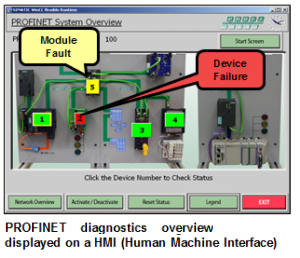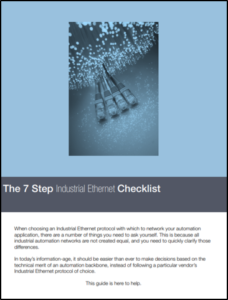There is often some confusion when engineers begin to use an Human Machine Interface (HMI) and PROFINET. In the next series of lessons, we will explain how HMIs are typically used in PROFINET systems and describe the types of HMIs and application protocols available.
Introduction
An HMI or sometimes called Operator Interface is a device used in automation environments which provides graphics-based visualization for both monitoring and control for a human operator to interface to a machine. Oftentimes, on PROFINET systems, this is a device connected to the network which usually communicates to a PROFINET controller. An HMI can also read or write process information to these systems or receive notifications and diagnostics/alarm messages
Implementation
In modern systems, HMIs have become even more ubiquitous. They can be implemented via an external node with a built-in display usually ranging from 4” to 20” screen size ( operator panel/interface), a PC with HMI software loaded, or even a mobile device. Some HMIs on PROFINET systems have wireless capabilities allowing mobile functionality. The advantage of a mobile device is that it can be right beside the operator at all times. Some PROFINET HMIs might even have an e-stop button built in (as part of a PROFIsafe application).
As the need for more information arises and the use of analytics and machine tracking are employed, HMIs have a key role. HMIs may not just be monitoring a device or a single machine. Instead, they might be monitoring the entire process or multiple machines in conjunction with a SCADA system. We even see HMIs embedded in PLCs, drives, network components, and other devices for device management and process monitoring. Also, cloud based monitoring systems with analytics and diagnostic reporting on the overall process can be found.

HMI on PROFINET
Many questions may arise when using HMIs on a PROFINET system such as “What protocol(s) are the HMIs typically using on a PROFINET system?”, “How can I use them in my applications?”, and “How can you best design HMIs into a system?”
The good news is that there is no need to worry. HMIs work seamlessly on PROFINET systems because PROFINET is an open network. Therefore, any Ethernet based protocol can be used on your HMIs whether it’s PROFINET real time (RT) or TCP/IP, but there may be reasons to choose one type or another depending on your application requirements.
In the next lesson, we’ll cover more about HMIs protocols and how they are used in PROFINET systems.
